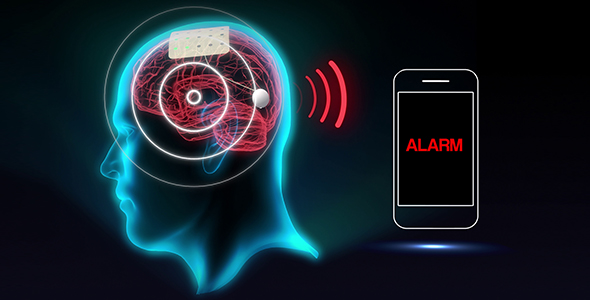Friday, 19 February 2016
Graphene sensors interacting with the brain and a method for low-cost printing of graphene-based devices at the Mobile World Congress
The technologies presented at the Graphene Pavilion of the Mobile World Congress take advantage of the unique combination of graphene’s properties, such as high mechanical flexibility, biocompatibility, and ability to transport electricity. The Pavilion curated by ICFO - The Institute of Photonic Sciences, in collaboration with the Graphene Flaghship, includes two technologies developed by researchers from the Institut Català de Nanociència i Nanotecnologia (ICN2).

The first one, in collaboration with research centers from Barcelona and the Campus of the Autonomous University of Barcelona (UAB), introduces graphene electronic sensors that can be used to detect brain electrical activity. Such sensors can be used in a large area with very high spatial resolution. The second one consists of a versatile, low-cost and customizable method for patterning graphene oxide onto a myriad of substrates.
A research leading to biomedical applications and brain-machine interfaces
Watch the animation about the sensors on Youtube.
The graphene electronic sensors for the brain are possible thanks to an interdisciplinary collaboration between the research Groups led by the ICREA Research Prof Jose Antonio Garrido from the Institut Català de Nanociència i Nanotecnologia (ICN2), who started this research line at the Technische Universität München (TUM), the CSIC Tenured Scientist Dr Rosa Villa, from the Centro Nacional de Microelectrónica (CNM-IMB-CSIC) and CIBER-BBN, and the ICREA Research Prof Maria Victoria Sánchez-Vives, from the Institut d’Investigacions Biomèdiques August Pi i Sunyer (IDIBAPS). The basic research led by these researchers offers exciting opportunities of translation into human applications through their interaction in the context of the Graphene Flagship and the Barcelona Institute of Science and Technology, participated by ICN2.
Based on state-of-the-art microfabrication technologies, the devices consist of arrays of graphene microsensors (approx. 10 µm x 10 µm) assembled on flexible polymeric substrates that adapt to the morphology of the brain surface. Each sensor, in a so-called transistor configuration, detects very small changes in electrical activity in its vicinity. Thus, the electrical activity generated by the neurons in the brain is detected as small changes in the conductivity of the graphene sensor.
These devices are currently being used to study slow wave sleep and epilepsy in animals with the graphene sensors implanted on the surface of their brain, enabling researchers to simultaneously record the electrical activity from different regions of the cortex. These studies will play an essential role in the development of implants to be applied on humans.
The early detection of an epileptic crisis could be possible in patients suffering from epilepsy and implanted with these sensors. The implanted device on the cortex would alert the patient by, for instance, sending an alarm signal to an external mobile device. In addition, the alarm could also alert a medical centre or an ambulance. The technology of flexible graphene sensors lends itself to other biomedical uses in which relevant information needs to be obtained from the cerebral cortex, such as neuroprosthetics for verbal communication or to control artificial limbs.
The technology developed using graphene flexible sensors can also enable future applications for innovative Brain-Machine Interfaces. This ambitious objective could lead to a more efficient communication between humans and artificial electronic systems.
For further information, watch the animation about the sensors on Youtube.
Low-cost patterning of flexible electronic devices relevant for biosensing applications
Some methods for patterning electronic devices involve long manufacturing periods, high costs, and clean room facilities. Moreover, these methods are not versatile or effective for designing simple devices relevant for biosensing applications. The patterning method presented by ICN2, patented by researchers from the ICN2 NanoBioelectronics and Biosensors Group led by ICREA Prof Arben Merkoçi, allows the transfer of graphene oxide onto almost any substrate in an easy, cost-effective and customizable way. This technique does not require a clean room nor organic solvents, and could be appropriate for biosensor applications.
The method consists of three easy steps: printing, filtering and pressing. Wax printing is a green, low-cost and versatile technology that can be easily applied with micrometer resolution using any desired shape or image. The printed membranes have long-term stability and infinite shaping capability. The technology can also be implemented in a roll-to-roll hardware, speeding up the printing.
Devices can be made with any graphene derivative, gold nanoparticles, carbon nanotubes or quantum dots and could easily include any receptor for future biosensor applications. Depending on the materials and their concentration, the printed devices may be transparent, offering new possibilities for flexible and wearable (bio)electronics. Graphene oxide has been transferred onto a wide variety of substrates such as textile, paper, adhesive film or PET, among others.
For further information, download the patented graphene patterning technology Flyer and related article published at ACS Nano.

